Sila Gur’s textile portraits are filled with both beauty and mystery. She dresses her subjects in contemporary styles that feature luscious, embroidered textures. But you never fully see their faces.
Presenting a figure’s profile or a view of the back of the head is a key part of Sila’s thread paintings. When the faces are hidden, the viewers’ imaginations take over. Some may see themselves, others may see someone they know, and almost all invent each subject’s life story.
Hair styles and denim fabric also take centre stage, through Sila’s intricate layering of threads. Her interest in urban fashion design adds style and sizzle to her art. Detailed clothing, flowing tresses and physical poses all echo high fashion magazine spreads.
The fact that Sila is entirely self-taught and first picked up a needle in 2018 adds to the excitement of her portfolio.
Enjoy this look into Sila’s fashion-inspired embroidery art.
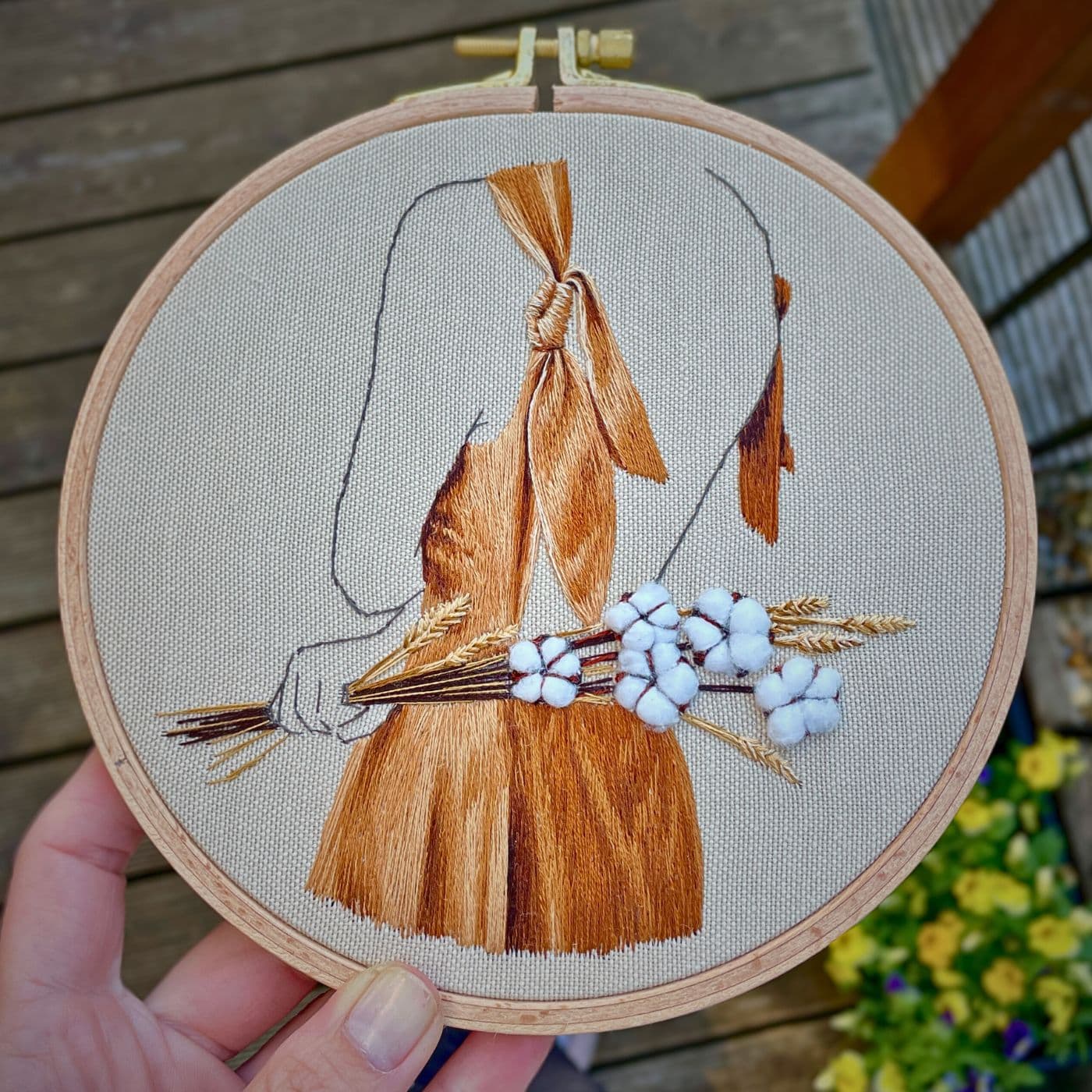
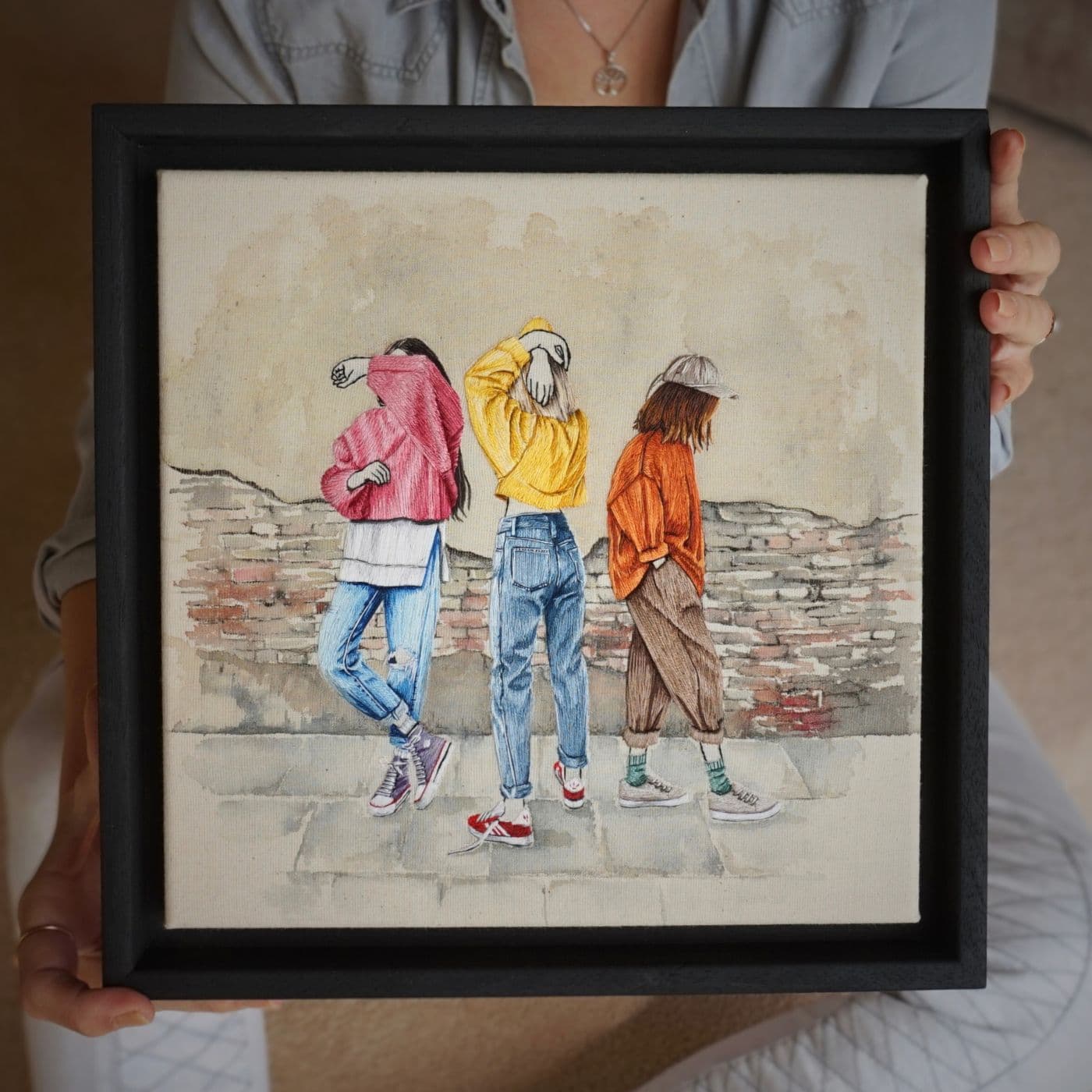
Thread painting
You describe your work as thread painting – can you explain what that entails…
Traditional embroidery has so many different types of stitch possibilities. But my work largely uses long and short stitches in a freestyle fashion that’s very intricate and quite realistic.
My stitching is essentially like painting on a canvas but using thread.
I’m inspired by almost anything, including nature, a city, a particular texture, something I see in a magazine or fashion blog. Even an advertisement or pose from the red carpet gets me thinking.
It’s fun to imagine the possibilities, but it can also make it difficult to pull all the ideas together to work in harmony to tell a story. Every day I have new thoughts about ways to make hair, maybe adding a scarf, making denim trousers, or what colour palettes I could use.
I always have new ideas and images in my mind for future projects, which can sometimes be a bit overwhelming, especially if I’m in the middle of another project. It’s definitely a distraction, but I can’t shut off my brain.
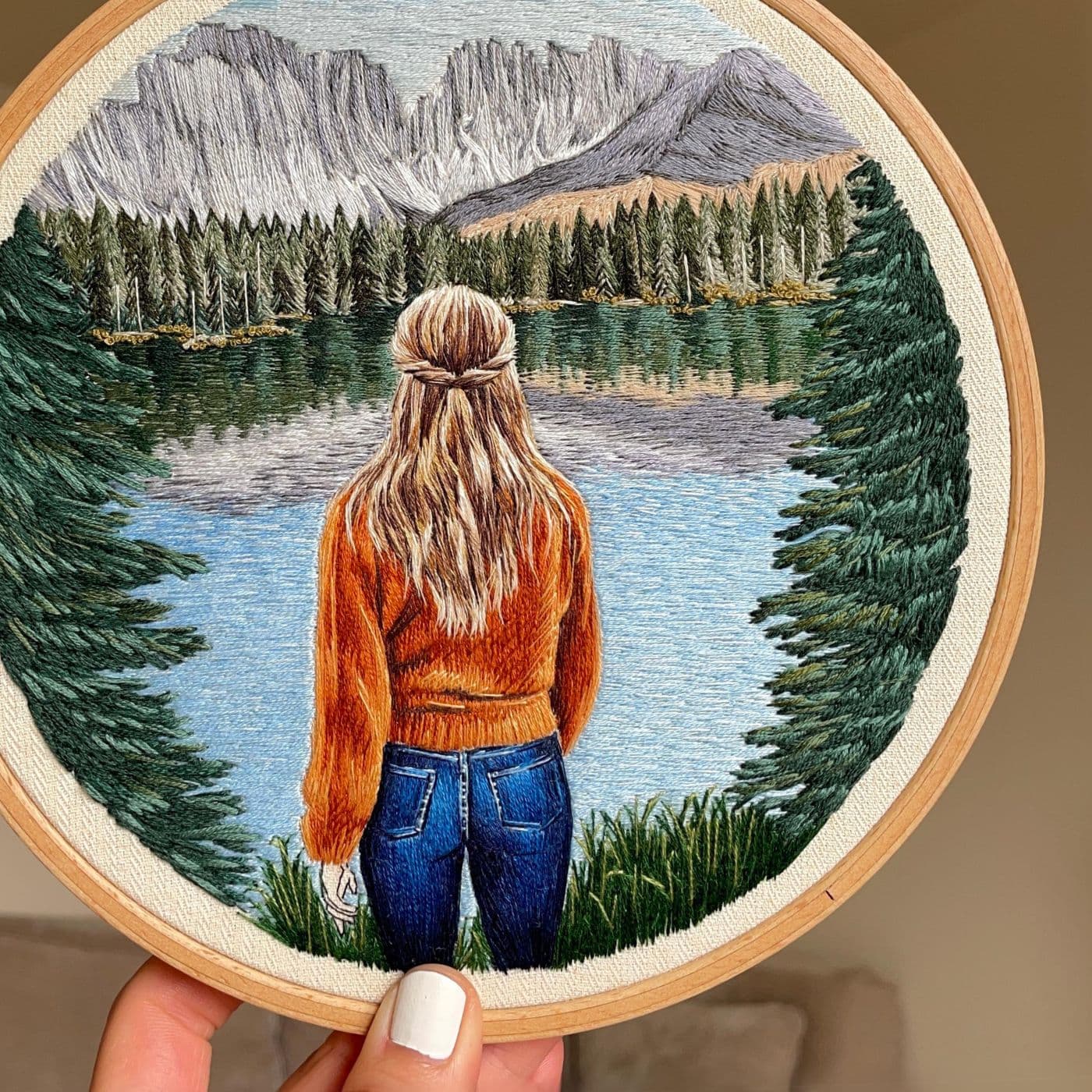
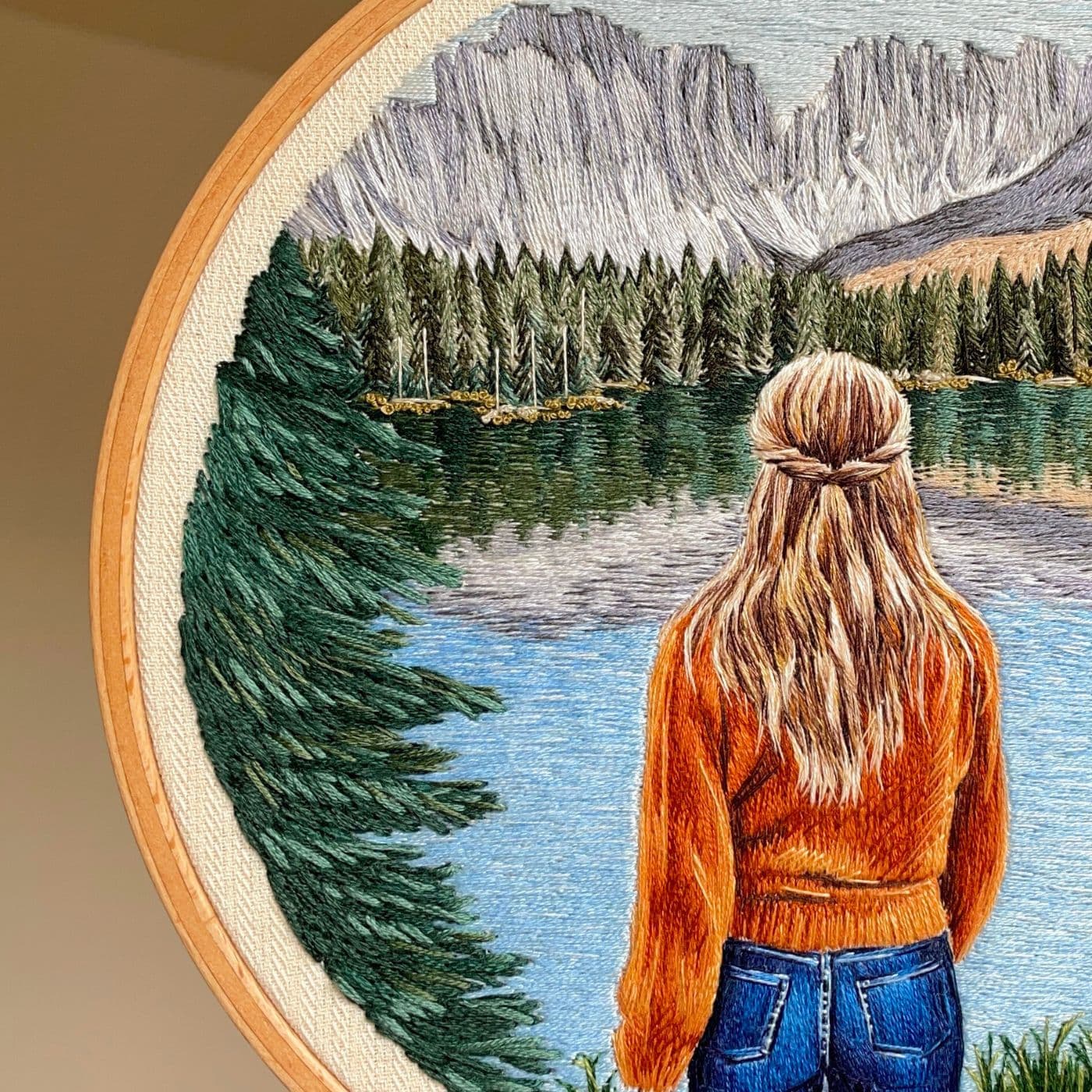
Who’s that girl?
Most of your work features the backs of figures, rather than a front view. Why is this?
Thanks for noticing that! Yes, most of my textile art purposely features the backs of figures because I don’t want to expose or reveal who they are. It makes me so happy when people say a figure in my work looks like their daughter, mum or friend.
I enjoy it when viewers imagine who my figures are or who they remind them of. It’s more engaging and makes me feel like I’m connecting with viewers. That’s so precious to me.
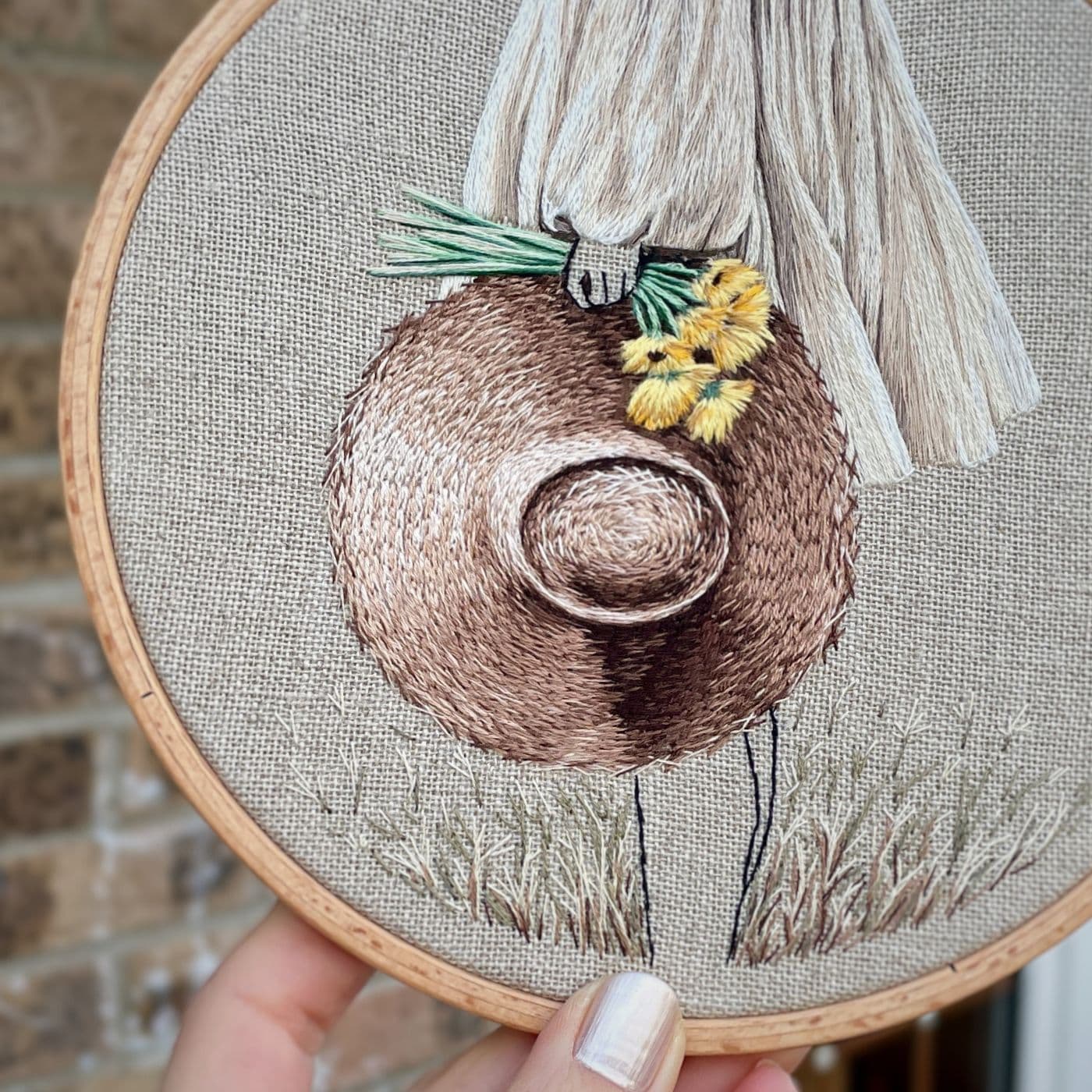
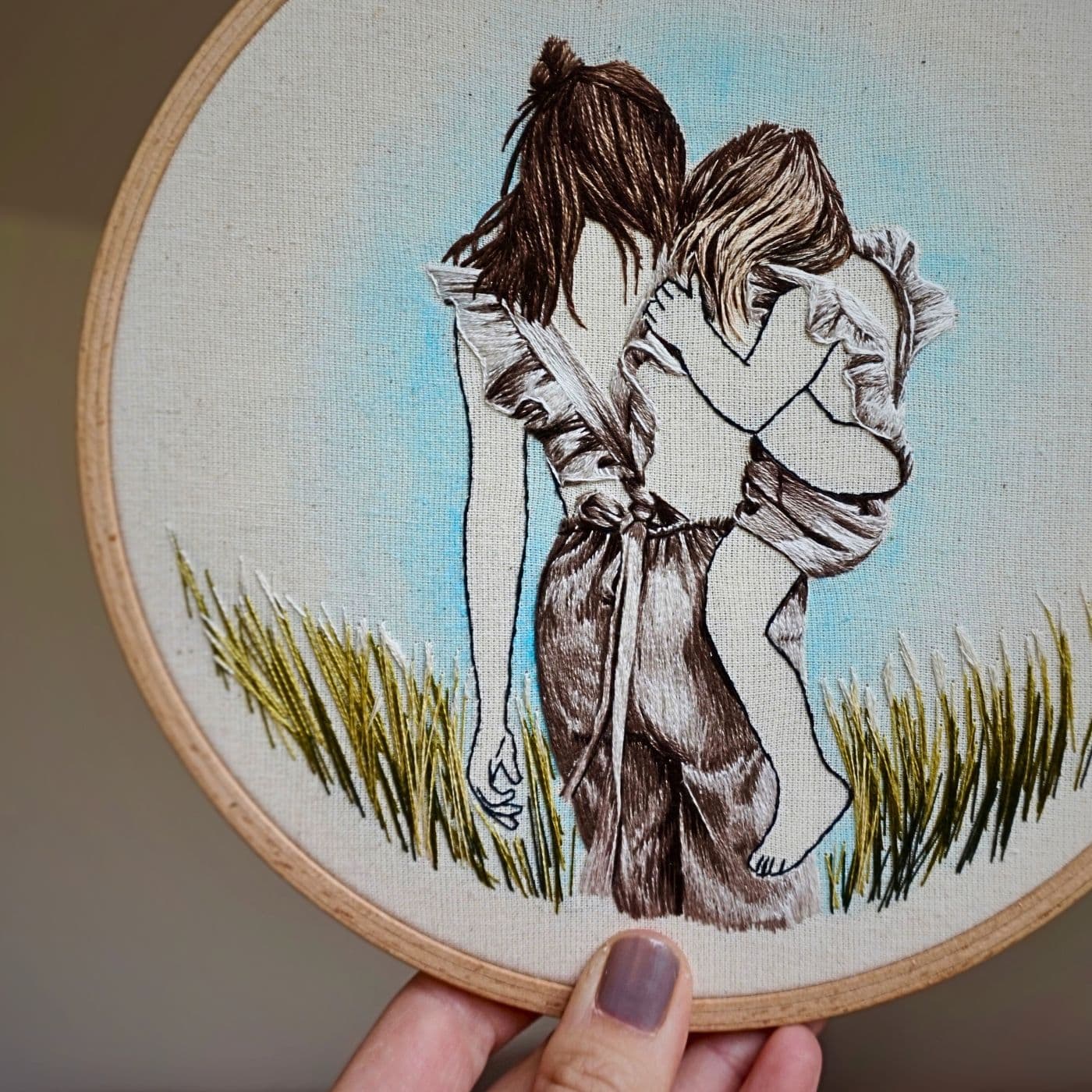
Denim takes a front seat in much of your work. What is it about denim you find appealing?
I love the timelessness of denim. It’s always modern and always fashionable. I enjoy stitching denim because it has high contrast on the sewed lines, making the artwork more eye-catching.
I prefer using DMC 930 and its lighter and darker shades for stitching denim. First I line up my colour shades from light to dark, and then I start with the middle tones. Next, I add the darker shades and lastly the lighter shades. I constantly blend the threads along the way.
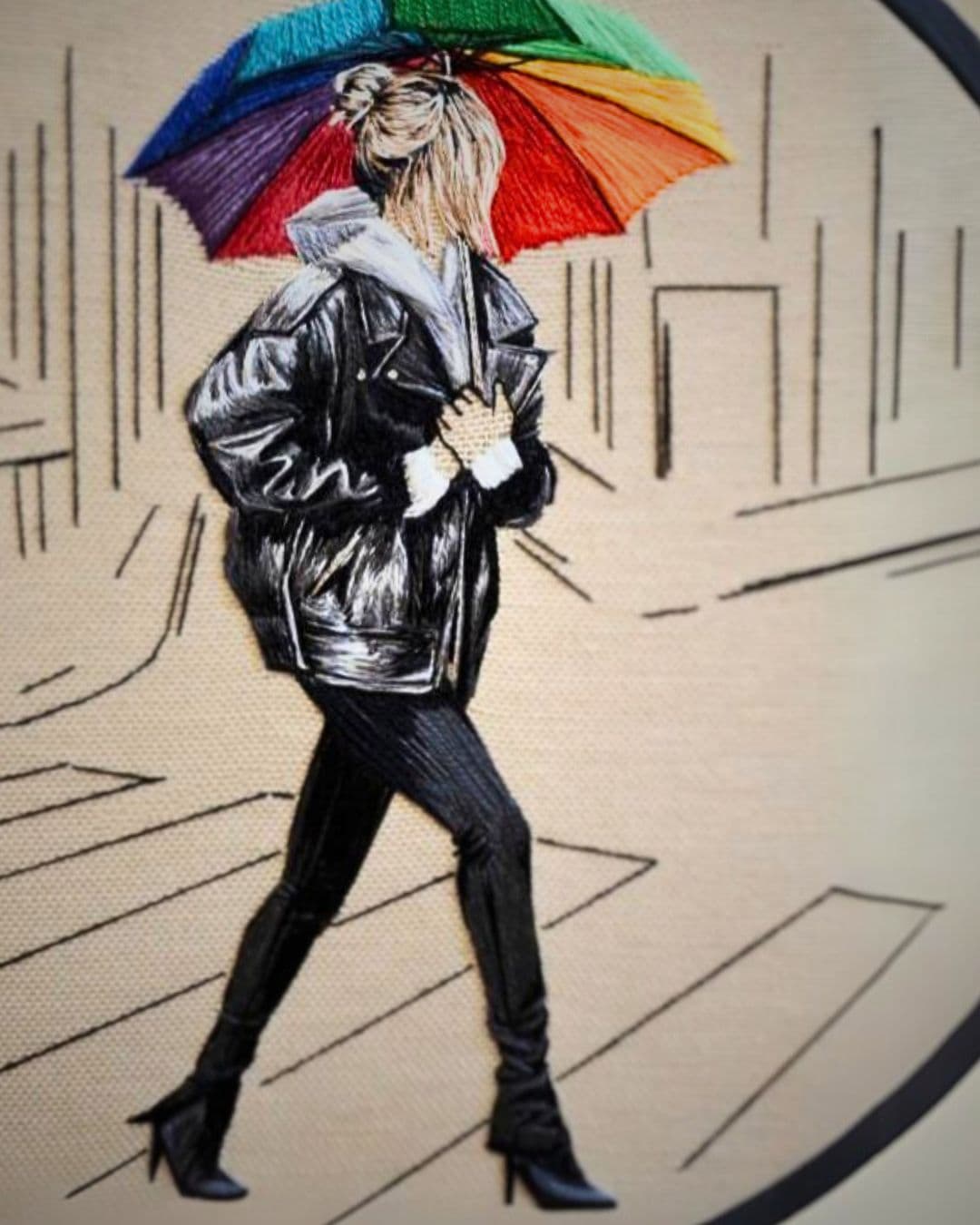
It’s all about the hair
Of course, we must ask about the way you stitch hair. How did you come upon the idea for embroidering such incredible free-flowing hairstyles?
Stitching hair was very challenging at first because it has curves, highlights and shadows. Trust me, it takes lots of practice.
I used to use six different colour shades for hair when I started. Today, I use more than 20 different colours. That sounds crazy, but it’s what it takes to make the hair look realistic.
Darker hair is a bit easier, as you don’t need as many shades as you need for highlighted blonde or copper hair. Wavy or curly hair is also a bit harder compared to straight hair, as I have to make all the curves.
Braided hairstyles are my favourite.
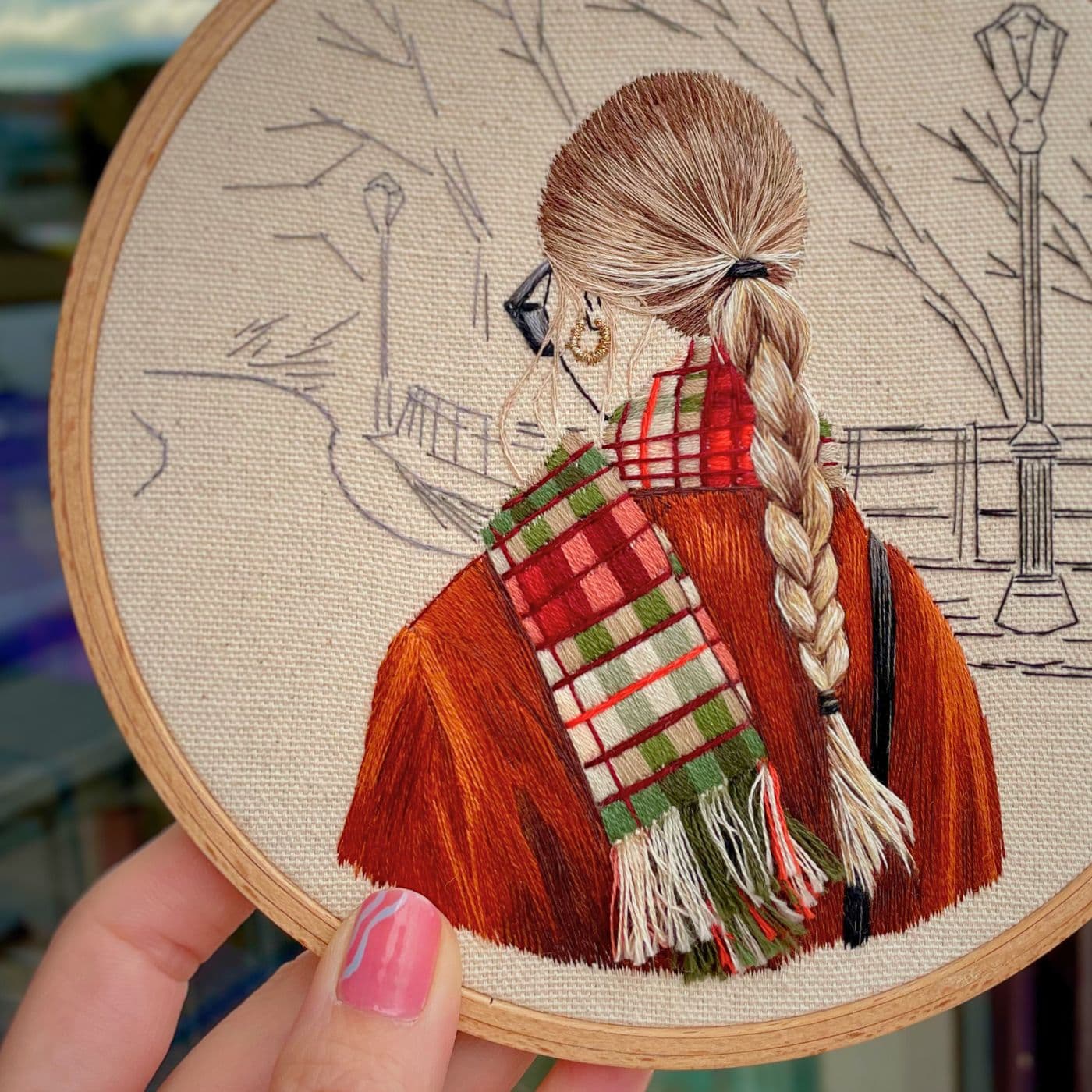
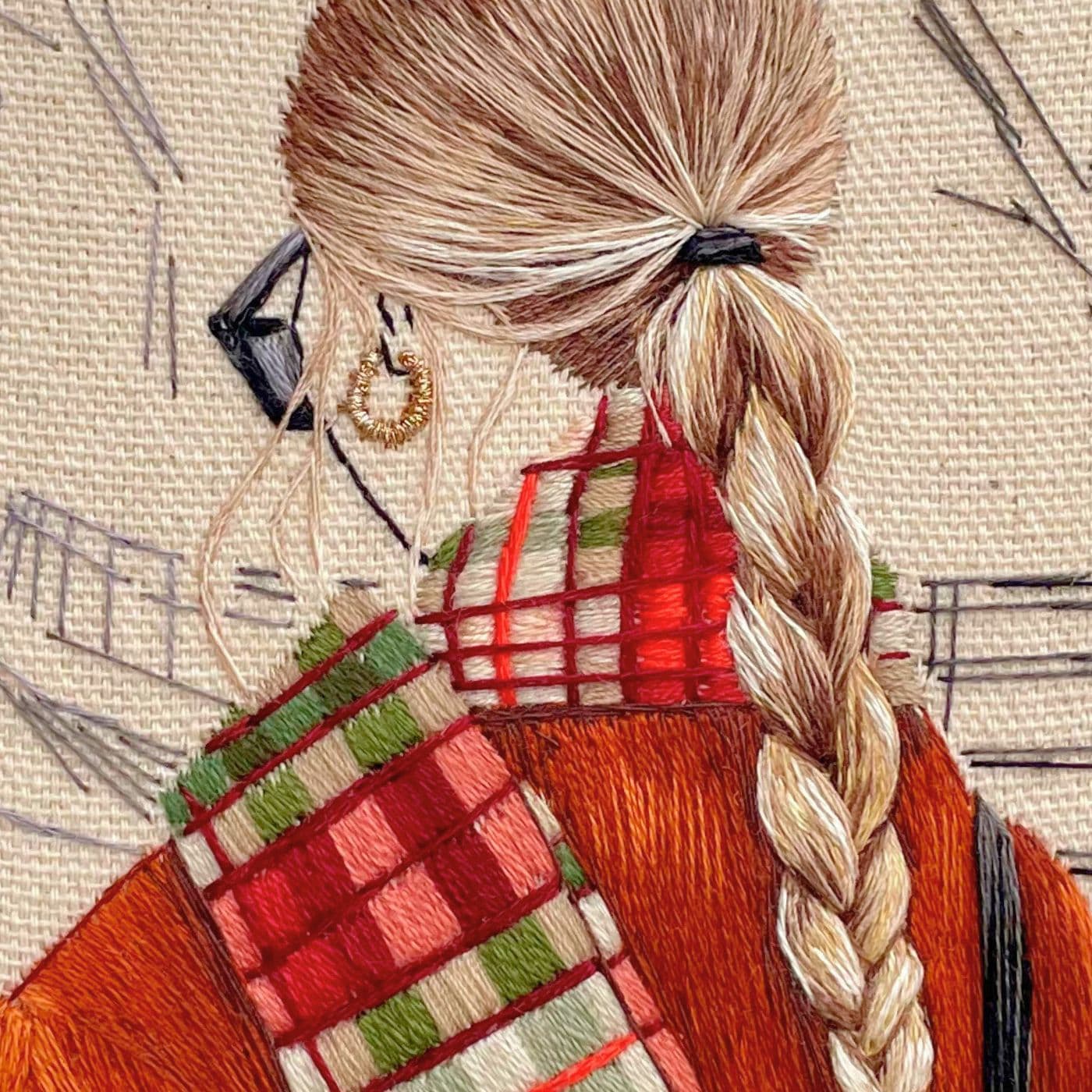
Discovering embroidery
What’s your earliest memory of making something with textiles?
Sila Gur: I’ve been artsy and creative since childhood. I love to make things and experiment with different techniques and materials. And though it might seem cliché, I did sew all my Barbie doll clothes and even crafted accessories.
But none of my family or friends were interested in textiles, sewing or fashion design, so I don’t know how I became so interested in using a needle.
I studied fine arts during high school and then fashion and textile design at Yeditepe University in Istanbul, Turkey. I studied fashion styling at the Fashion Institute of Technology in New York City.
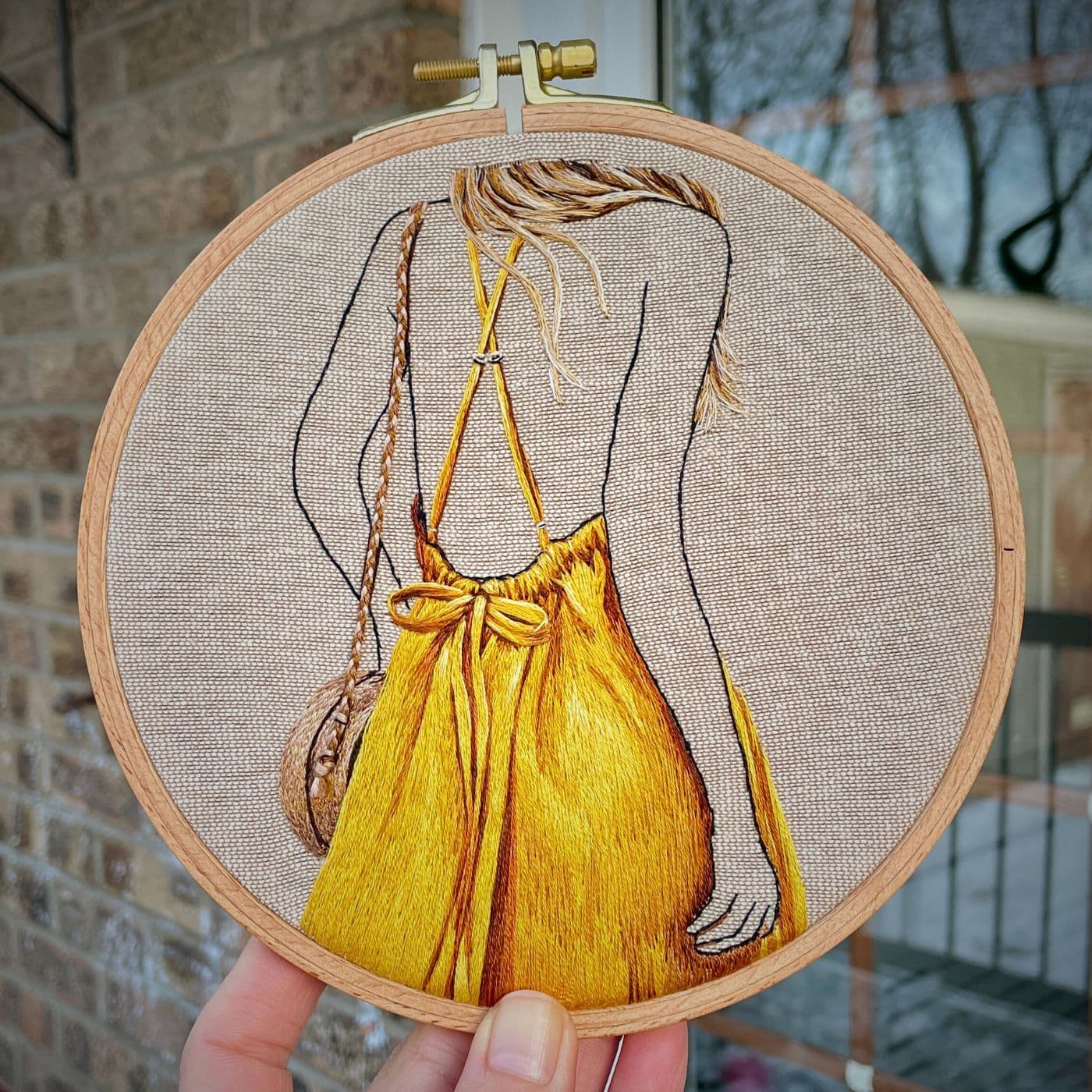
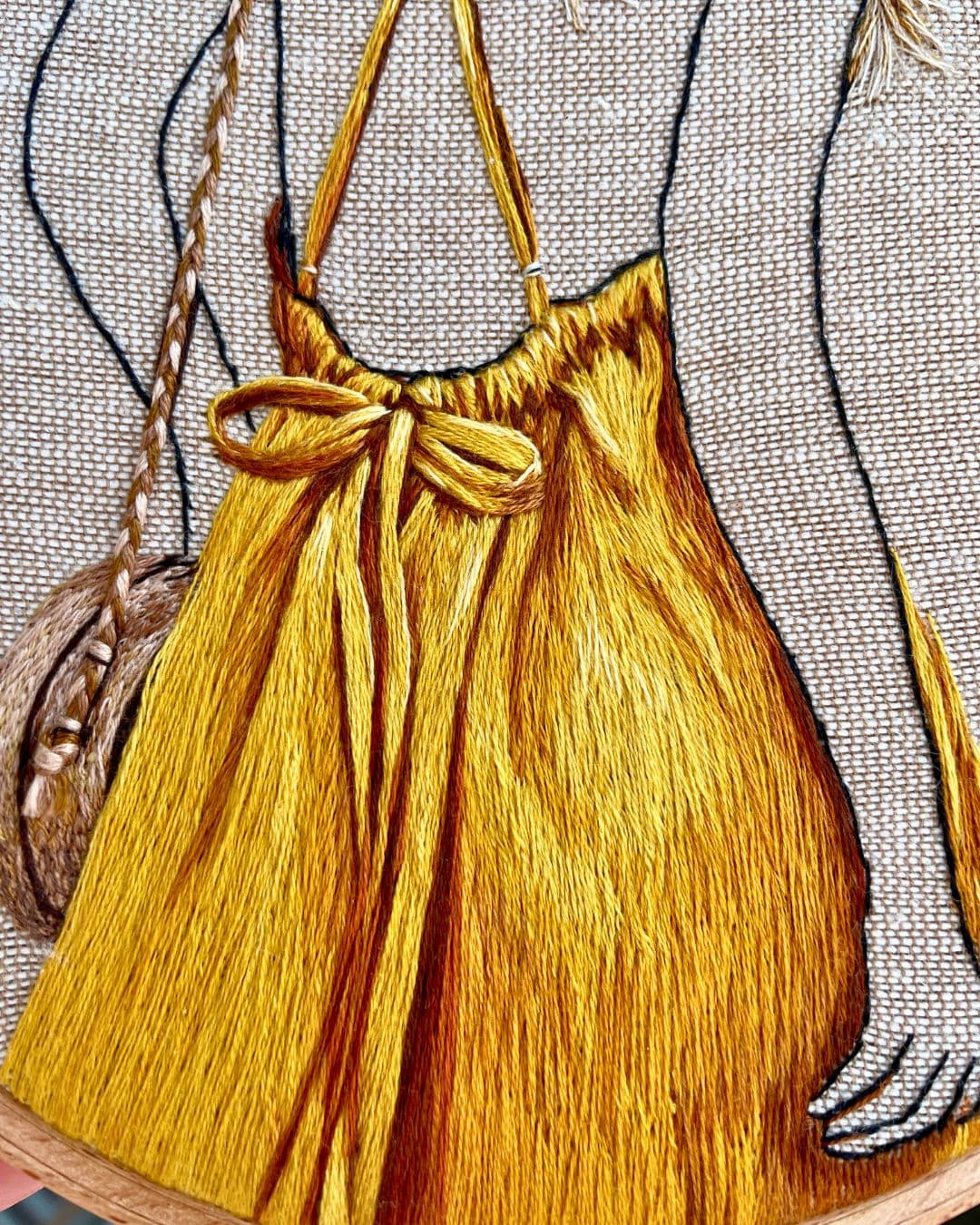
What was your route to becoming a textile artist?
When it comes to embroidery, I’m entirely self-taught.
It came about when I moved from Turkey to Scotland in 2018. I’m originally from Turkey, but my family moved to Scotland because of my husband’s work.
Our daughter was only one year old when we moved, and I became a full-time mum at home in a different country with no friends or relatives close by. I’m not at all a domestic person, so I felt the need to make and create something apart from being a housewife. I missed working and feeling productive and busy on a daily basis.
“I started stitching and discovered my love for hand embroidery.”
Sila Gur, Textile artist
I saw a couple of embroidery artists on Pinterest whose works were so modern, new and fresh. I especially enjoyed Elin Petronella’s amazing architectural embroideries on Pinterest.
I wanted to try something similar, so I figured out what I’d need and ordered everything from Amazon. I chose a few different sized bamboo hoops, aida fabric (which is actually used for cross stitch), embroidery needles and a very cheap set of embroidery floss threads in 100 colours.
I didn’t want to spend too much money, as I wasn’t sure I’d like embroidering. So, when everything arrived, I found they were of poor quality.
After that, I properly researched materials and visited a craft store to purchase better quality supplies. I then taught my daughter how to embroider and passed along the poorer quality materials for her to use to practice.
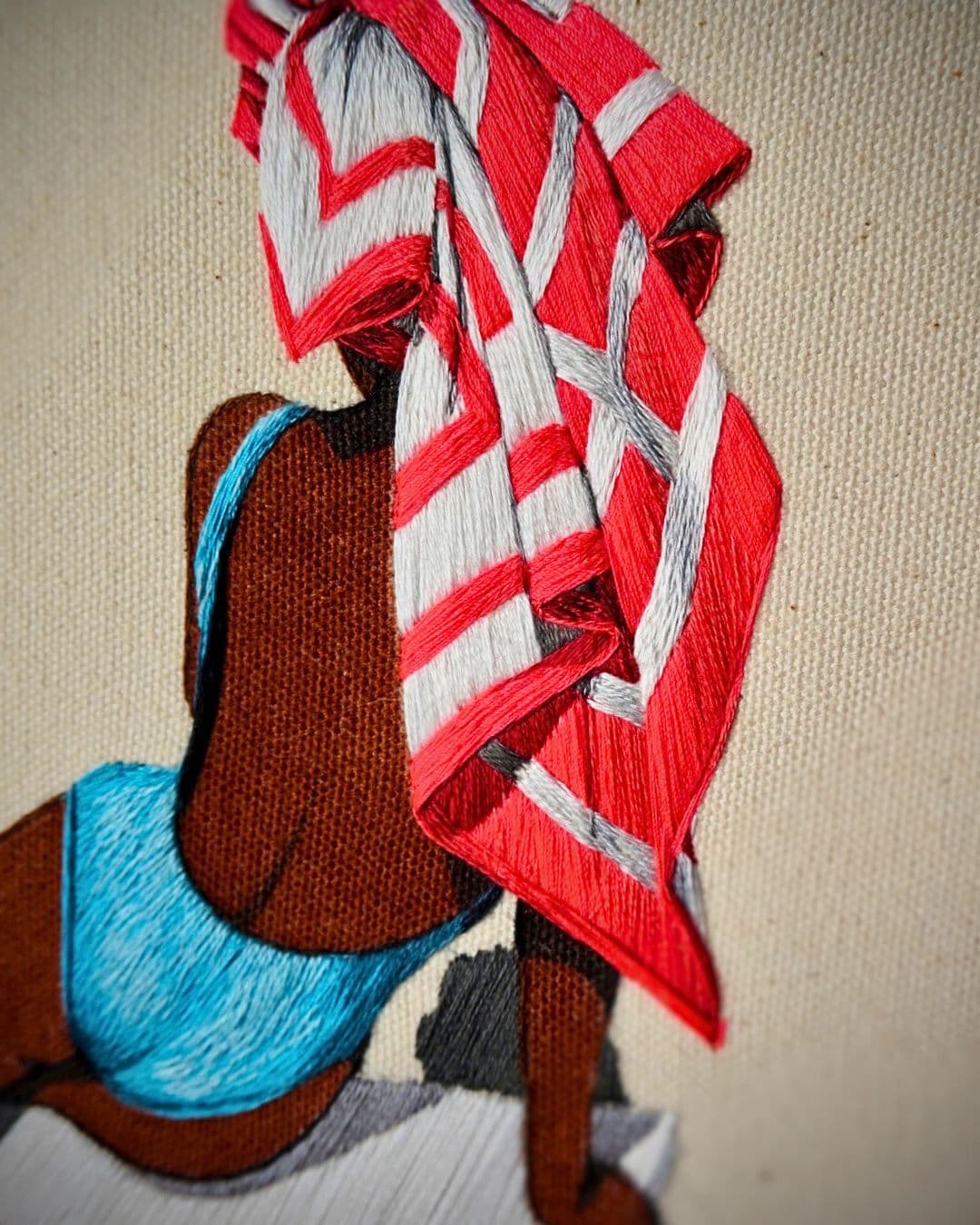
Where do your stitch stories come from?
I usually have a couple of ideas going in my head at the same time. I don’t rush my thinking. I’ll give myself time to think and imagine, and it’s like a silent gap between projects.
But once I decide on what to create, I become very excited and there’s no stopping me. I simply have to draw, choose colours and start stitching.
With that said, embroidery is ultimately a very time-consuming and slow process. It takes me weeks to finish stitching one piece.

Creative process
Do you use a sketchbook or computer software for planning, or something else?
I always sketch with a pencil on A4 paper first. It doesn’t take me long to draw something. I’ll also sometimes jot down notes.
I then take a picture of my drawing and import it into the ProCreate app on my iPad. The app allows me to add details, play with colours and experiment with backgrounds.
Once my design is complete, I redraw it on the fabric using an erasable pen. People think I transfer the drawing from the app, but I actually redraw the image. Because I’ve always been an artist, it’s fun for me to do so and it’s not a hard step for me.
Once I finish my embroidery, I use a blow dryer to get rid of the erasable pen marks.
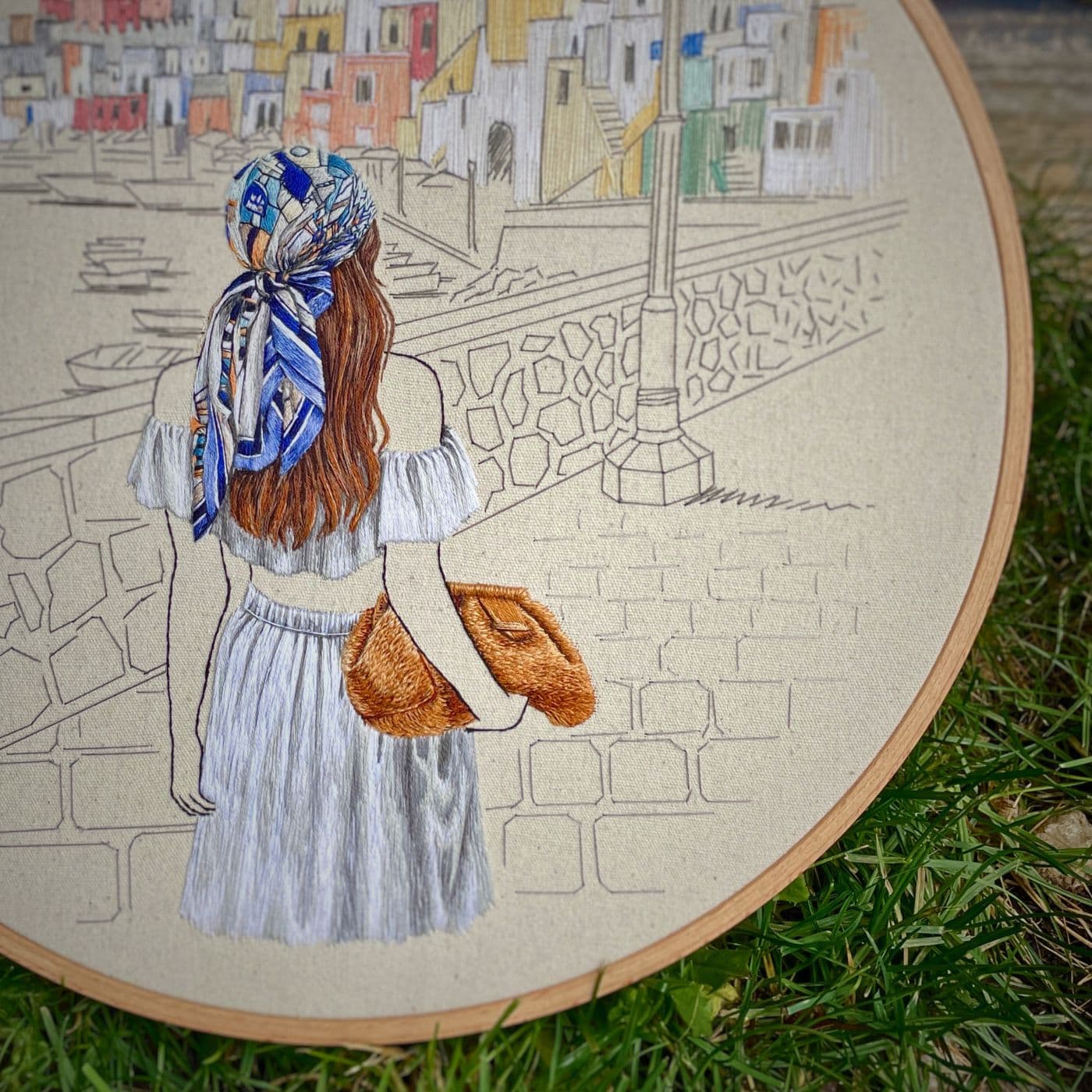
Any preferred stitches you use for your thread painting? And what threads do you use most?
My favourite stitches are long and short stitches in a freestyle motion. French knots are also fun to make, and I usually use them for small details.
While it looks like some of my threads lay loose on top of the canvas, they mostly go to the back. But sometimes I’ll use turkey work stitching on specific objects like the end of a scarf.
I usually use DMC embroidery threads. They are absolutely the best quality in the market. I also use Gütermann machine threads if DMC doesn’t have the exact colour I’m seeking.
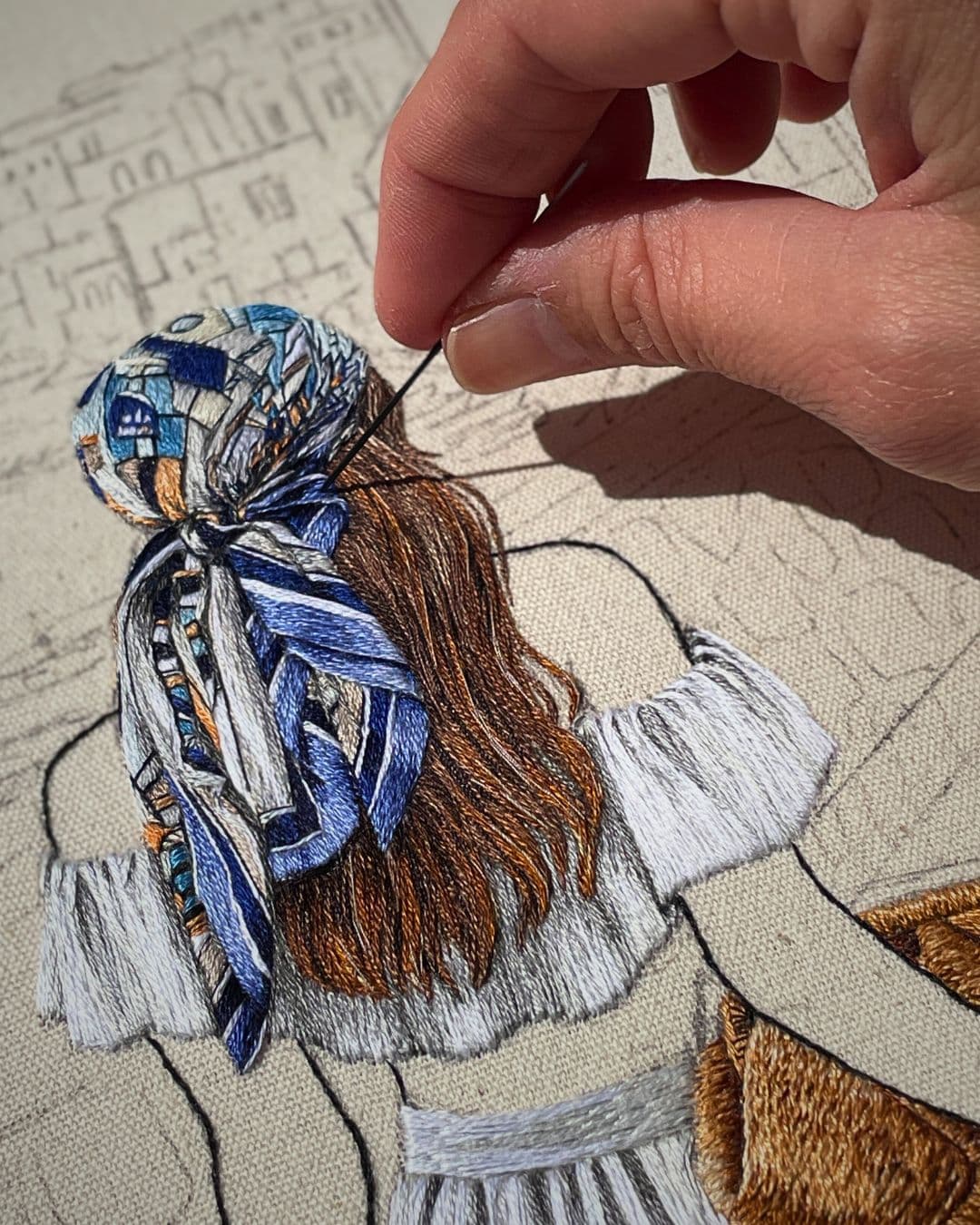
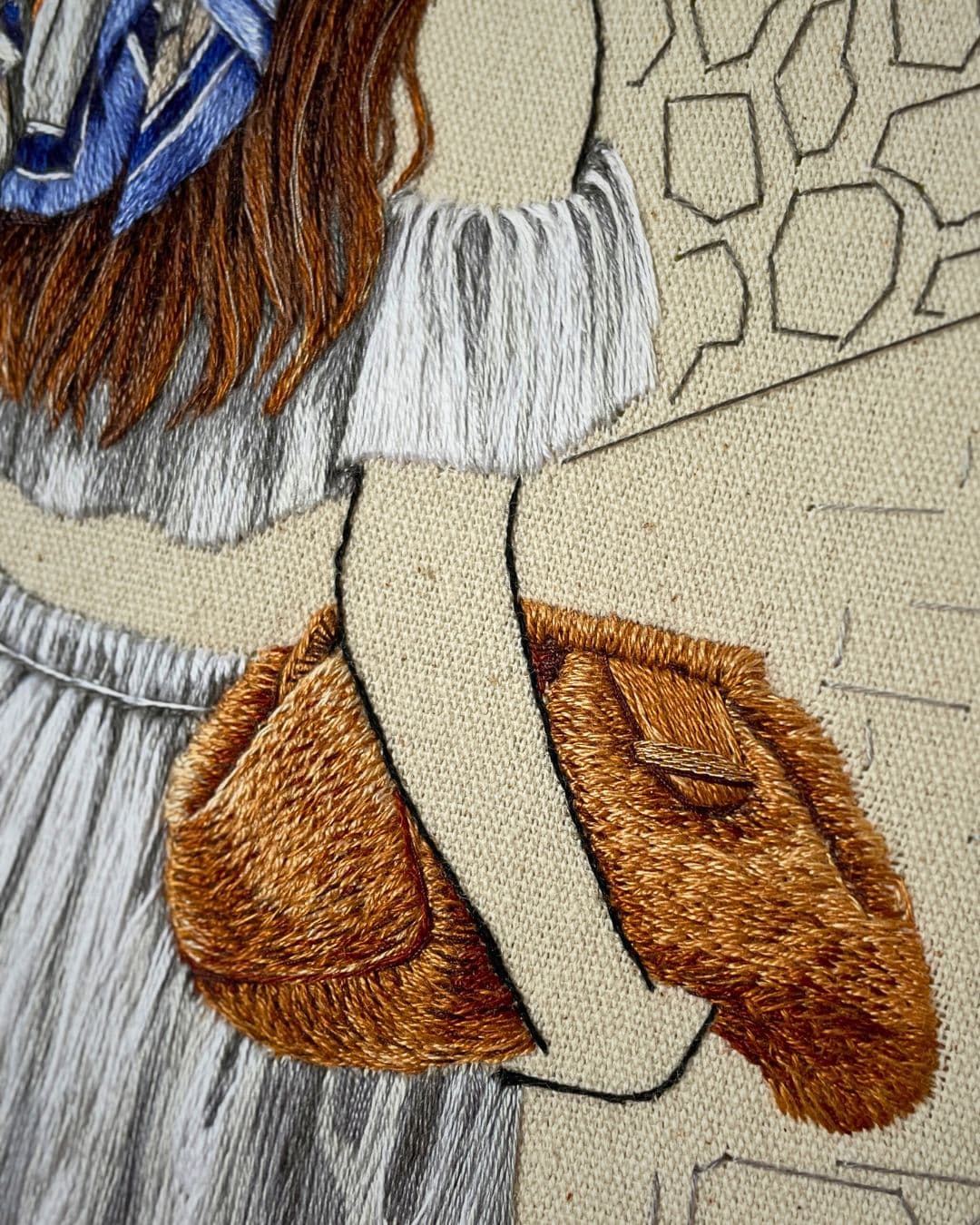
What are some of your must-have tools and materials?
I use thick cotton calico and linen fabrics most of the time. A few years ago, I did a series called I’m Here for You (see below) for which I used vintage lace as my base fabric. I enjoyed that and plan to use lace again if I can find something I like.
My forever must-haves are my Nurge embroidery hoops and hoop stand. The hoop stand is a game changer, in that it allows me to use both hands, and I have more control over my embroidery.
I also like a pair of scissors that are small and fine. No particular brand, just nice embroidery scissors.
And a Pilot FriXion heat erasable pen – I can’t work without it.
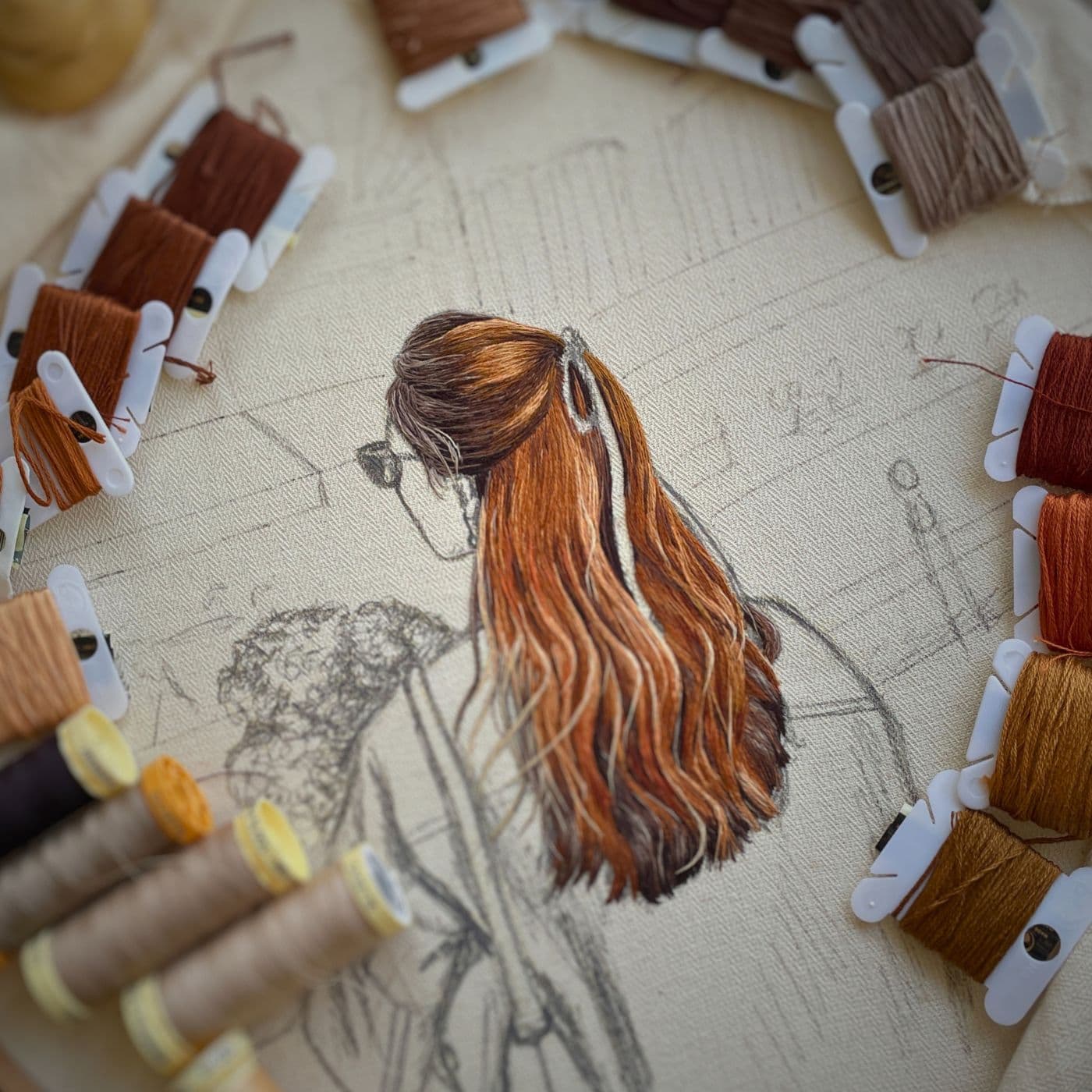
A closer look…
Table For One is a great example of how you create detailed and flowing hairstyles. Can you tell us a bit more about this work?
I wanted to use an autumnal colour palette for this piece, so I thought copper hair with highlights would work. It took me 80 hours just to stitch the hair. I used intricate realistic stitching in front of a single lined background to help the piece breathe.
“The background is fairly simple because I like paintings that balance realism with abstract.”
Sila Gur, Textile artist
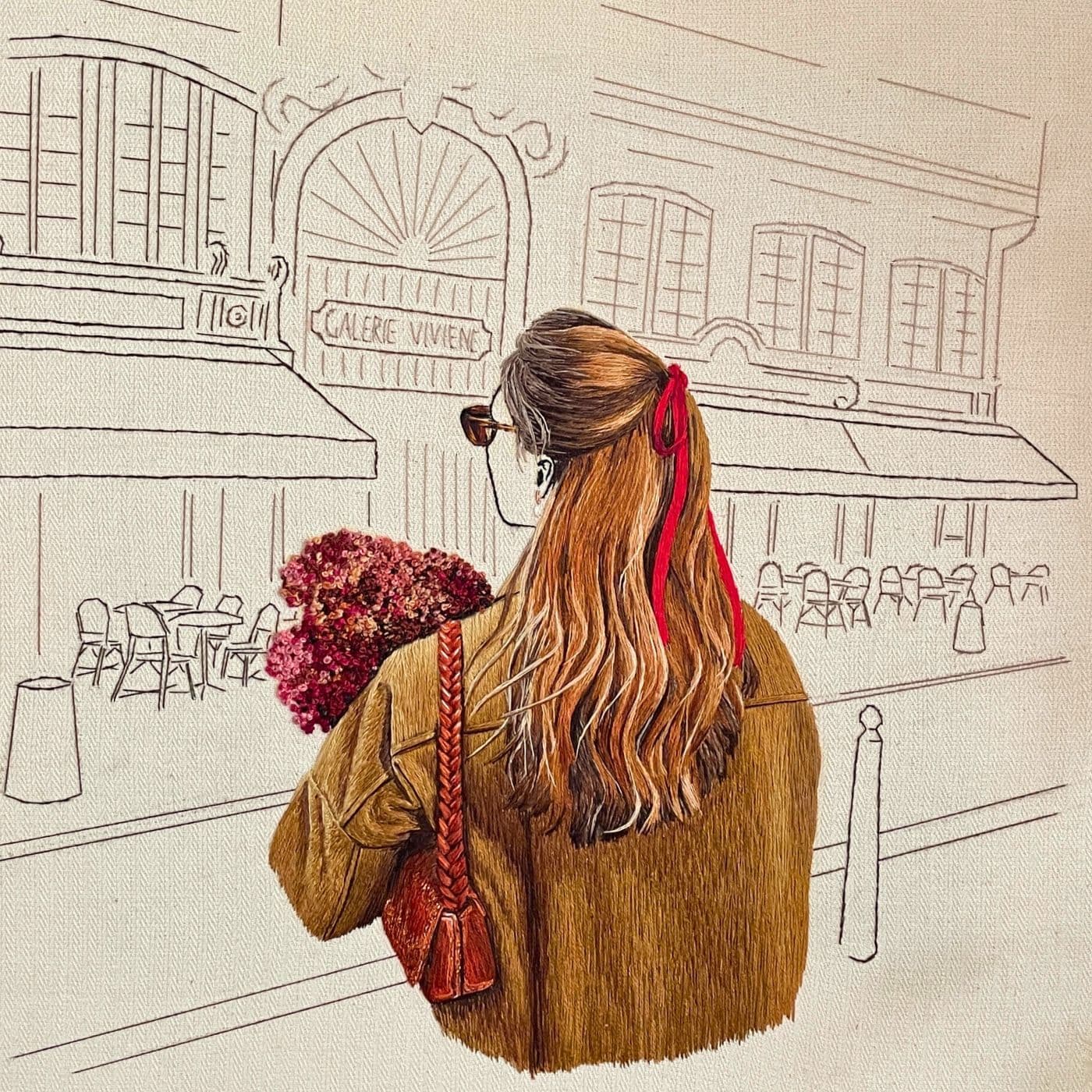
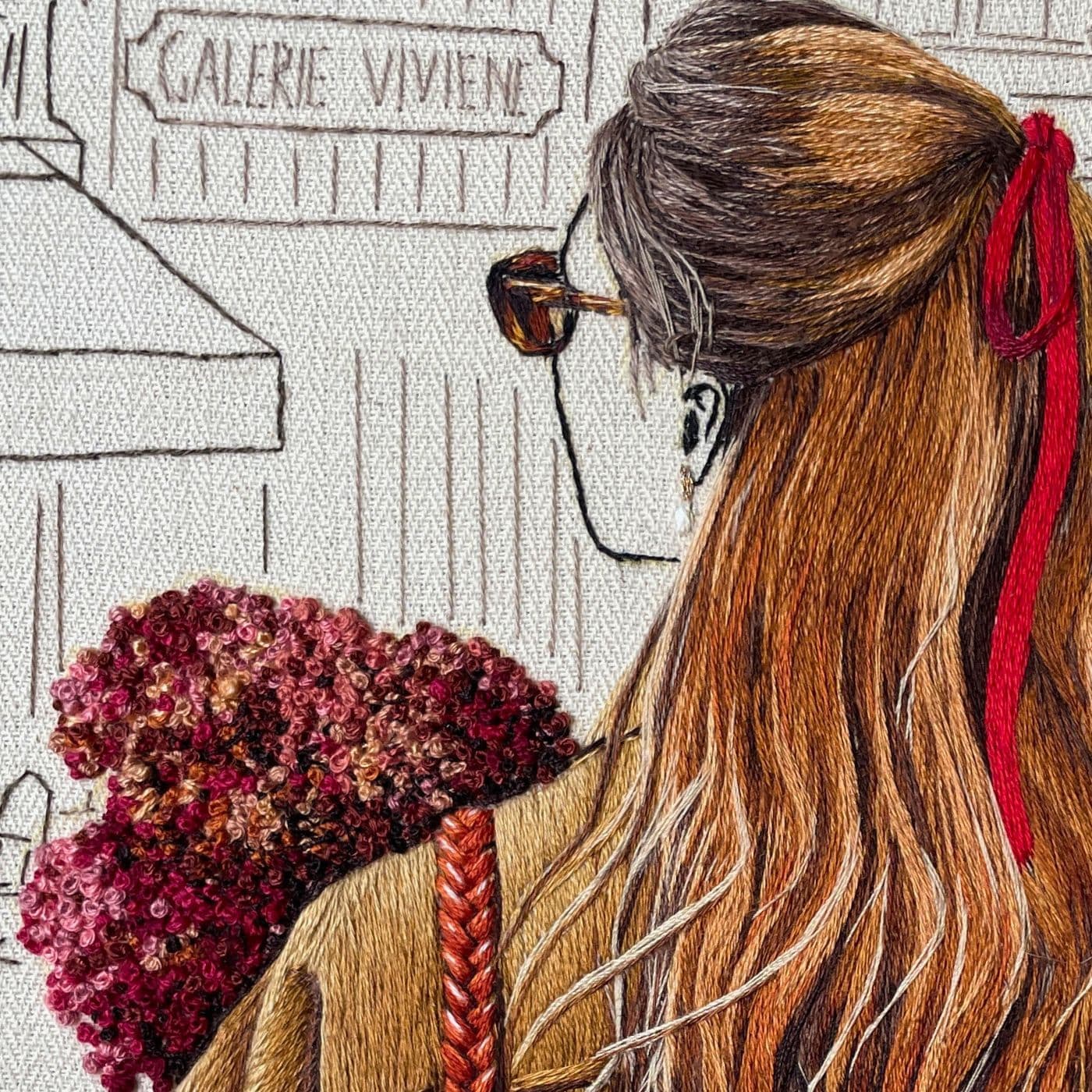
Why did you choose lace as a background for your I’m Here for You series, and what challenges did it pose?
I created this series right after the pandemic when people’s lives had changed, mentally and physically. Many loved ones were lost, and it was a hard time for people all around the world.
Lockdown made me realise how my family and friends bring meaning to my life and are what I care about most. This series is a tribute to that realisation.
I wanted to stitch on lace, as its threads are very delicate yet attached to each other, just like us. It was the most challenging art I’ve ever created. They’re small pieces, and each took ages to make. The gaps and big holes were especially problematic, so I had to stitch and cover them first before I could actually embroider.
If anyone is interested in stitching on lace, I’d recommend they do so only if the holes are tiny and the lace doesn’t stretch.
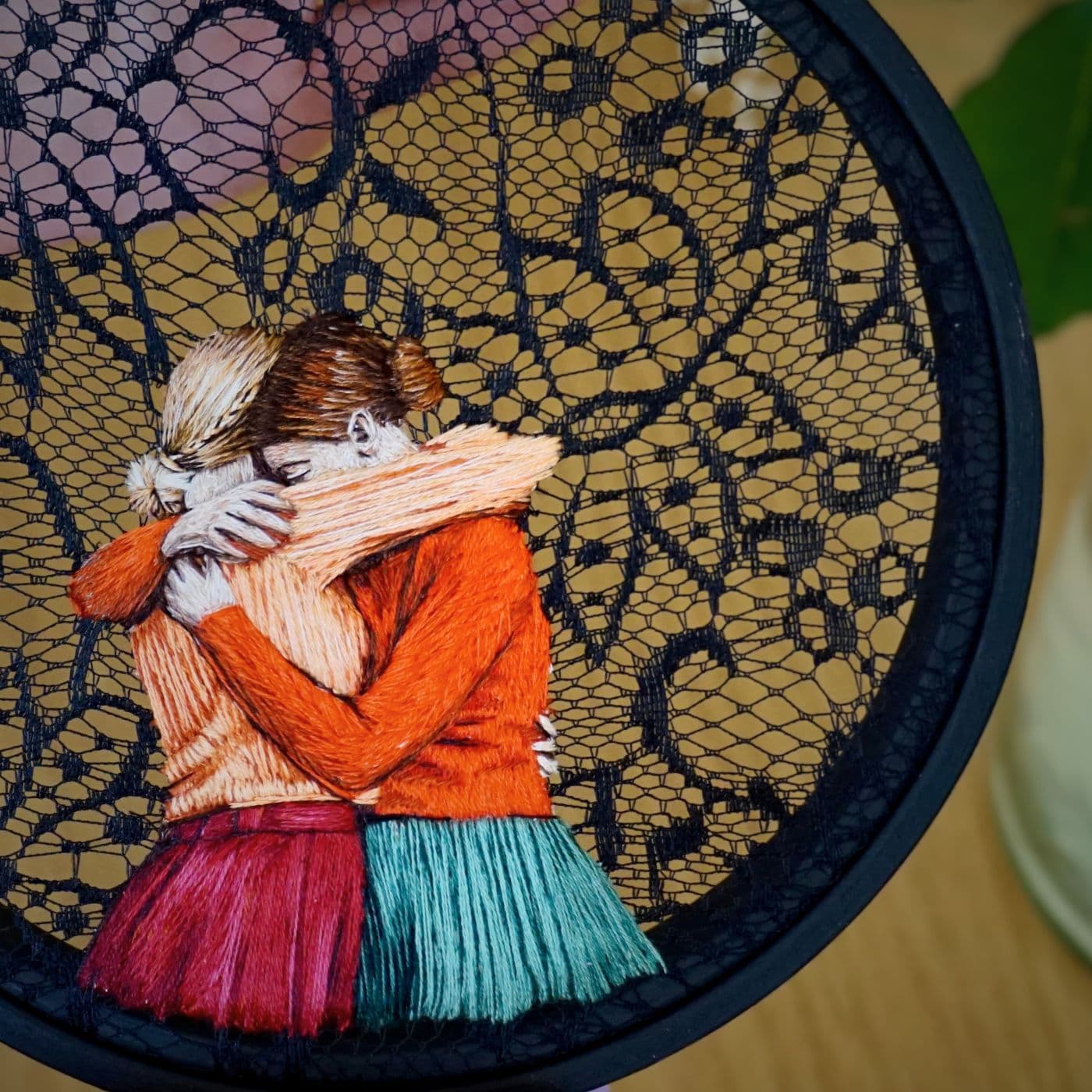
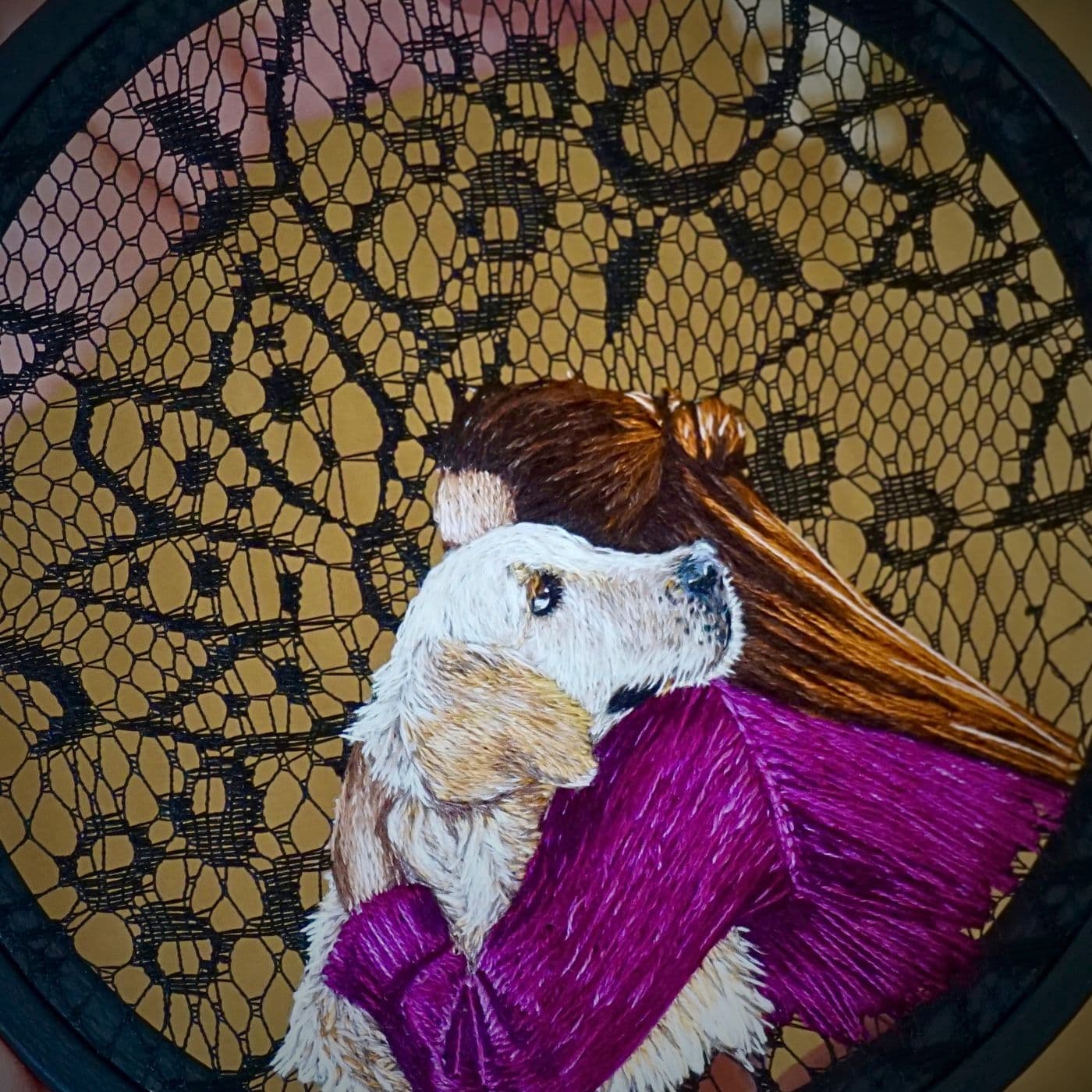
What’s your most favourite work?
Girl With A Camera is my favourite – I wanted to emphasise the denim texture, and I like how the jacket has one shoulder off and folded. It creates both movement and a bit of drama. I love all the highlights and high contrast shades.
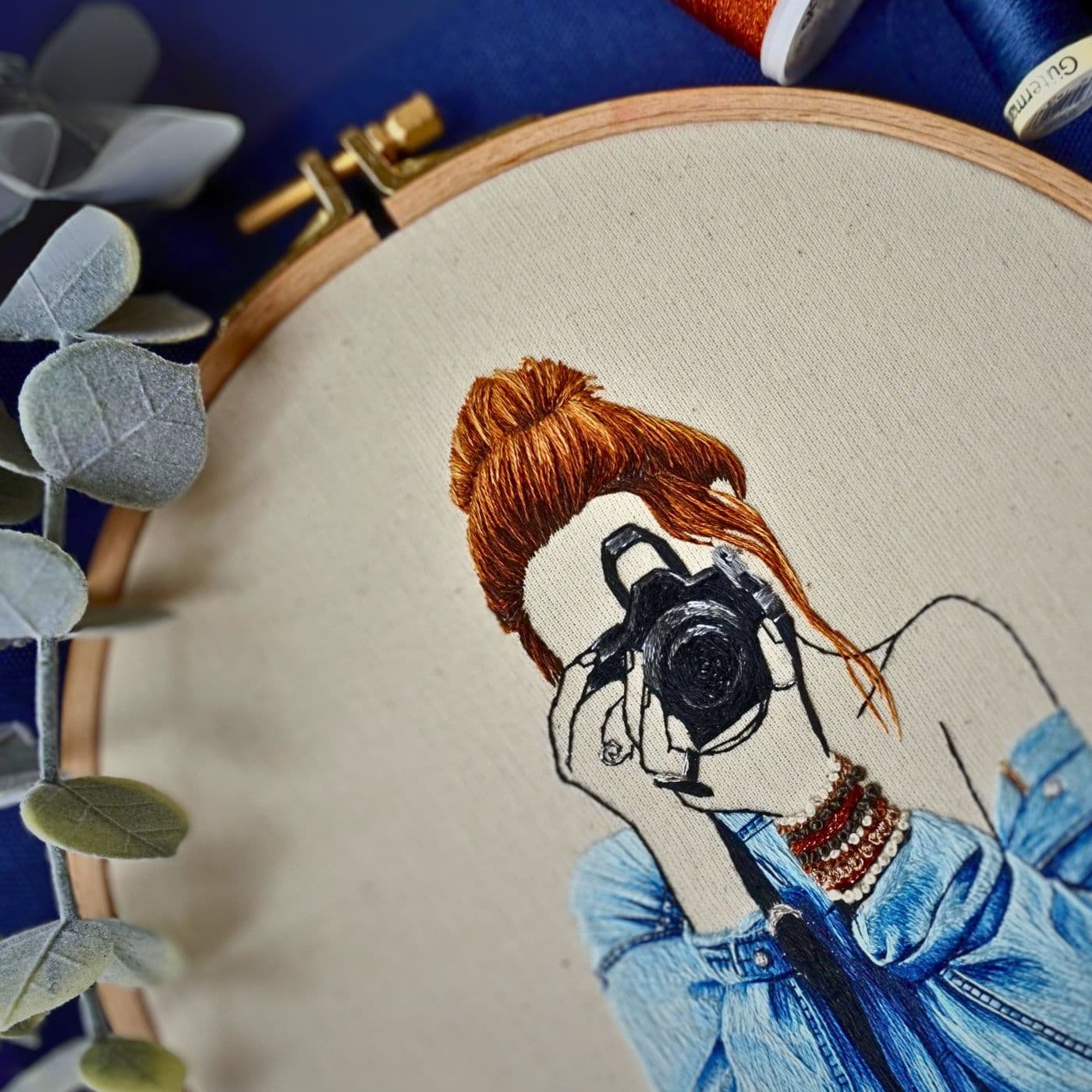
Navigating social media
What’s your relationship with social media? Love it? Hate it?
I must admit Instagram used to be a better place. Five years ago, I could post a work-in-progress picture in bad lighting and get thousands of likes and comments. Today, I have to create short videos, add trending music, edit, add captions and think about algorithms. That’s not easy!
I’m an up-to-date person and I don’t fight with new trends or technologies, so my relationship with social media is fine. But I do know many artists struggle to engage with others or to find their communities.
My advice is to keep sharing your work and keep posting.
“Don’t wait for people to discover you – if you want them to see your work, you need to go ahead and show people what you make.”
Sila Gur, Textile artist
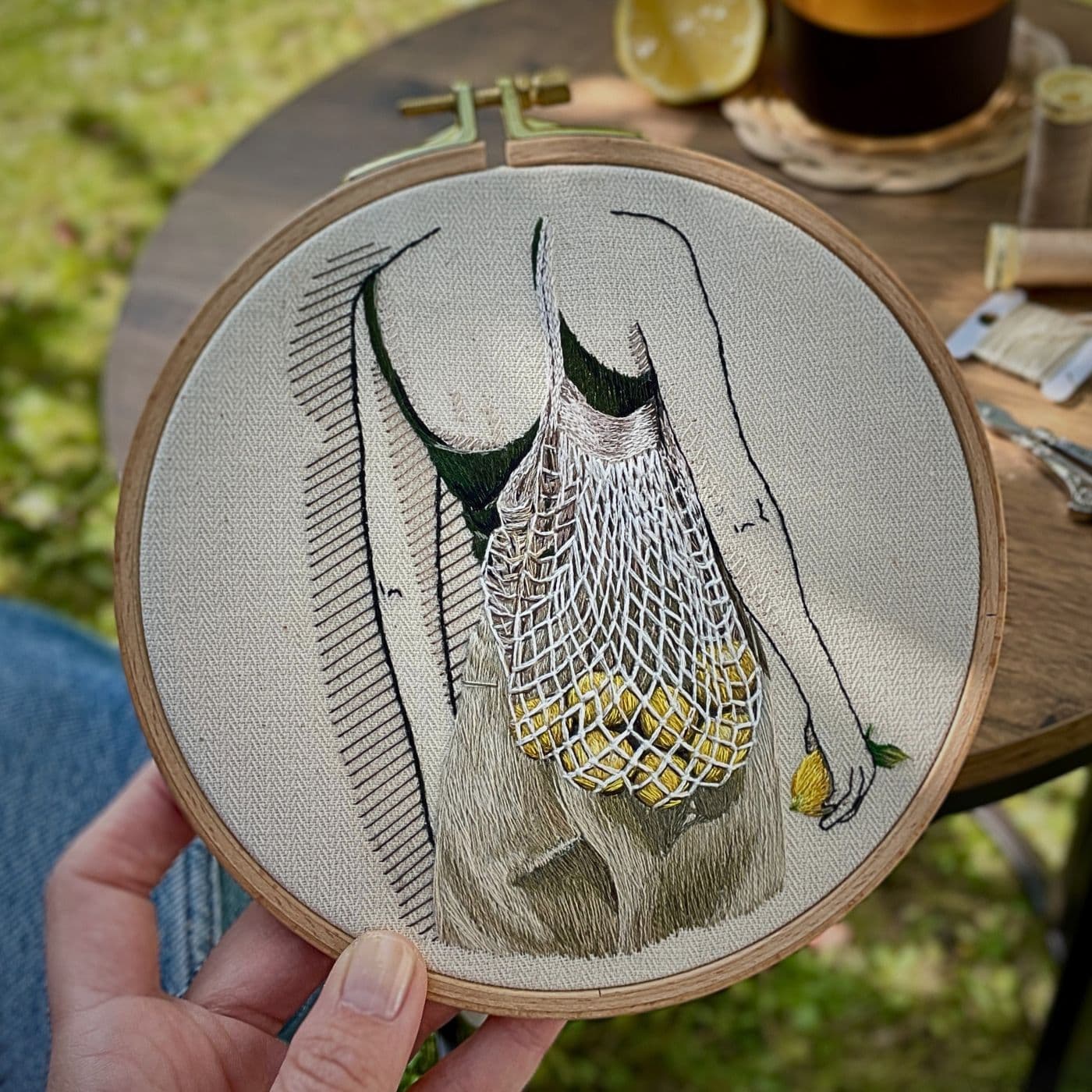
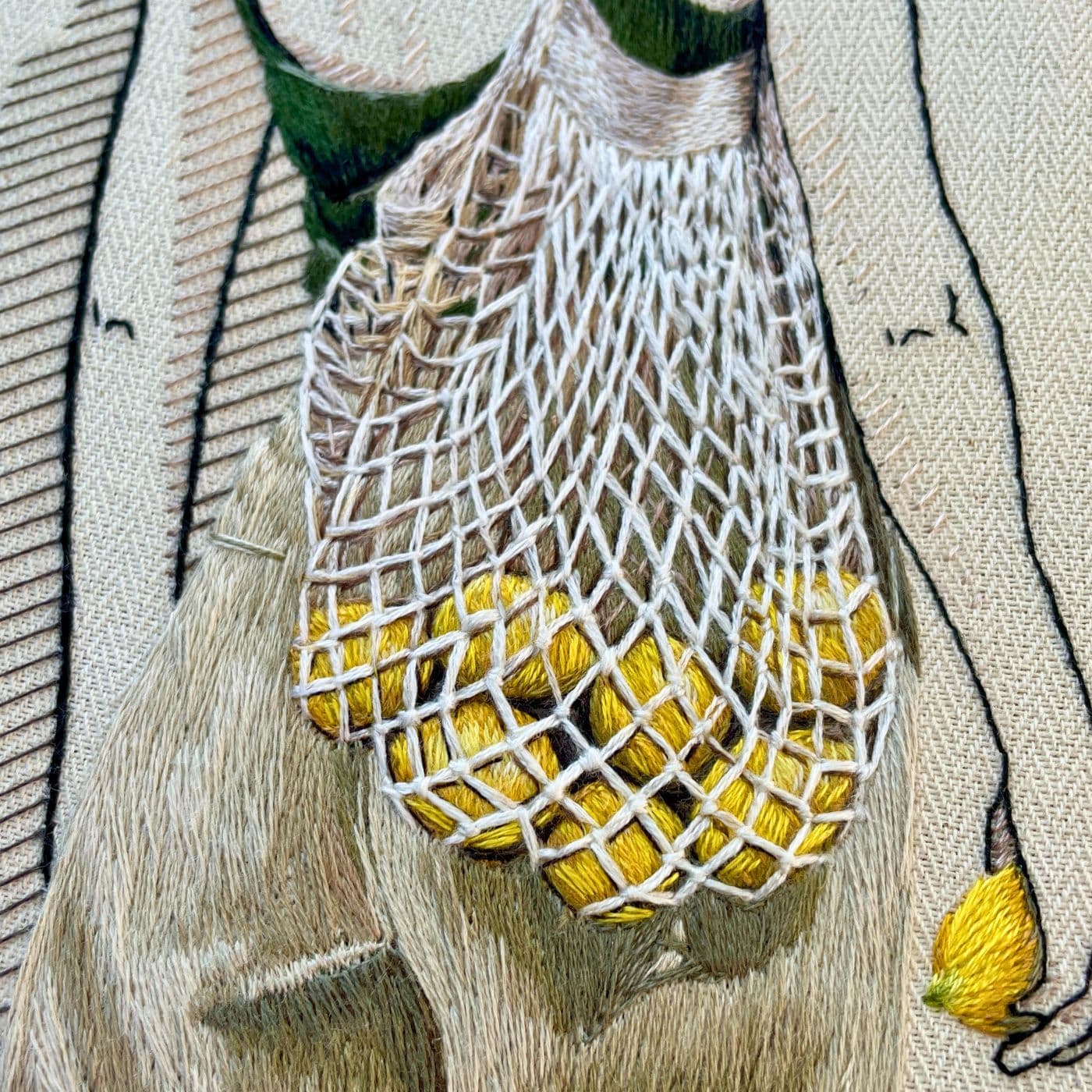
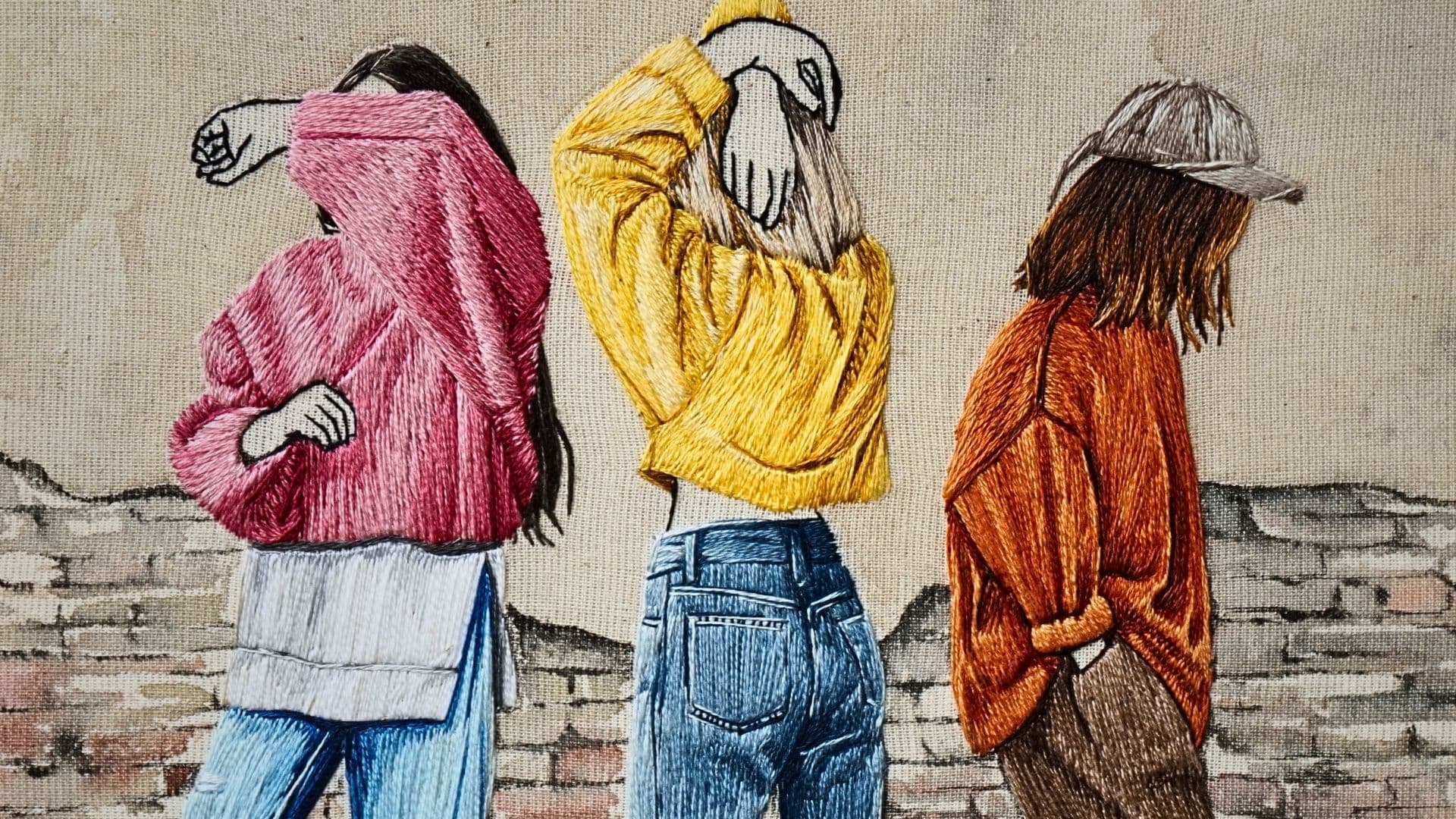
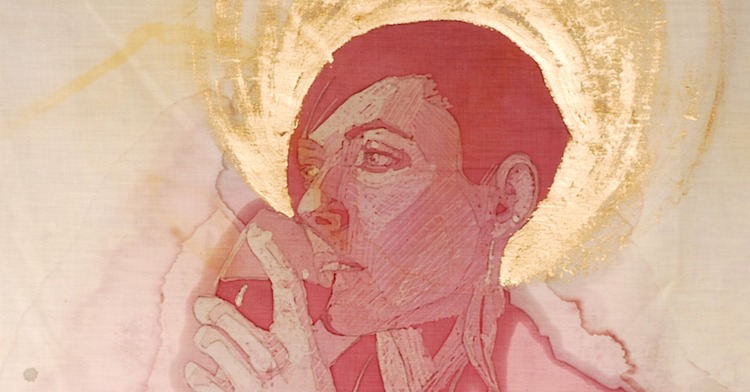
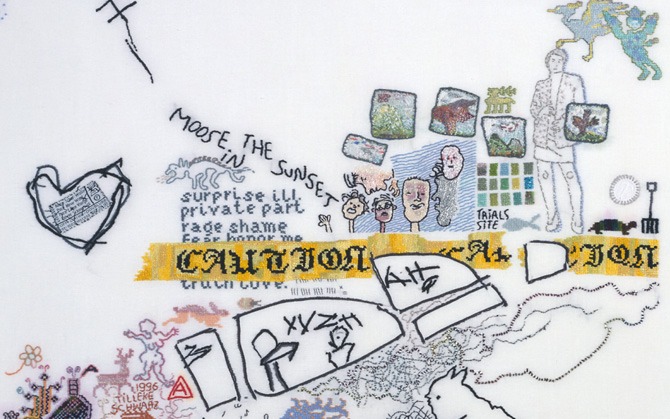
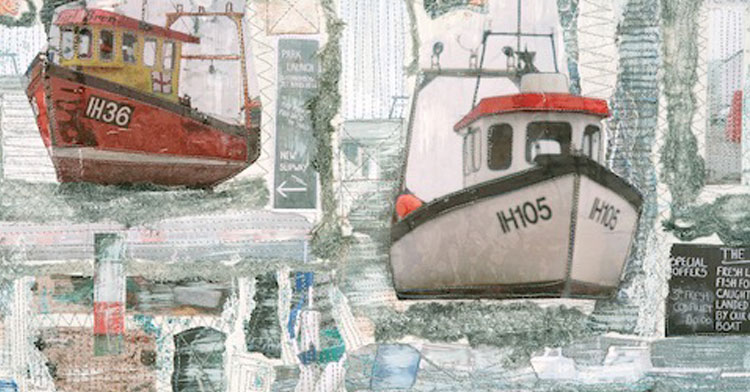
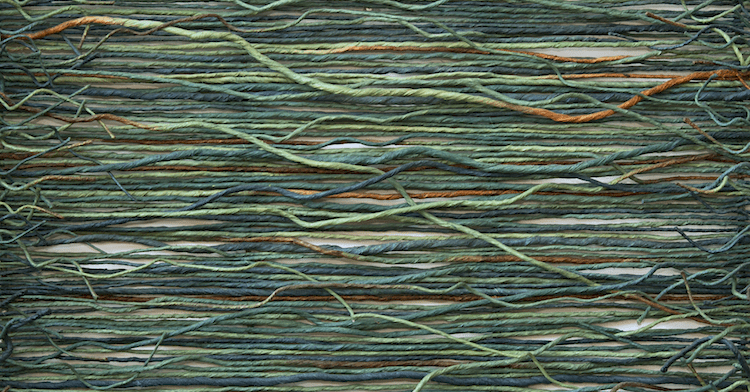
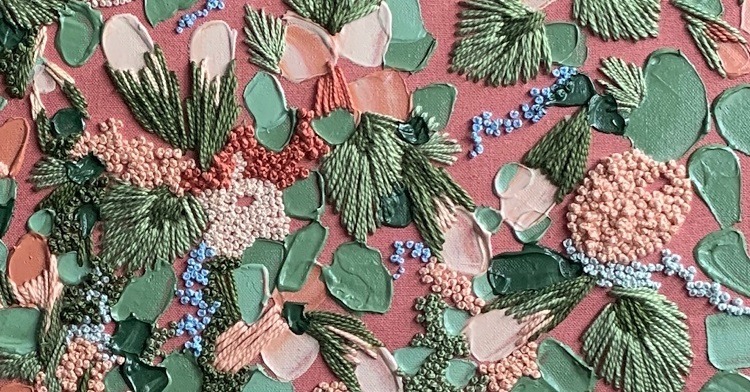
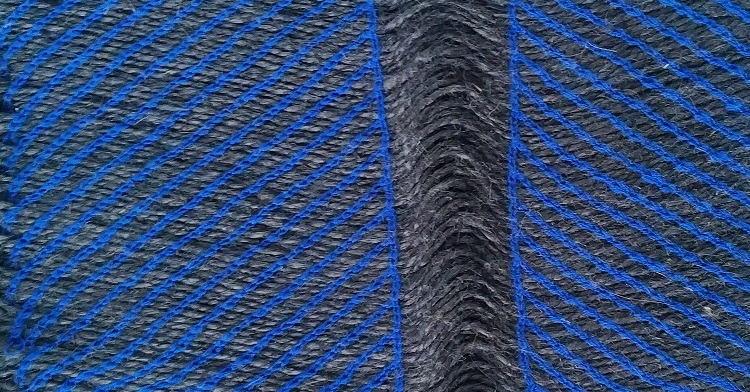
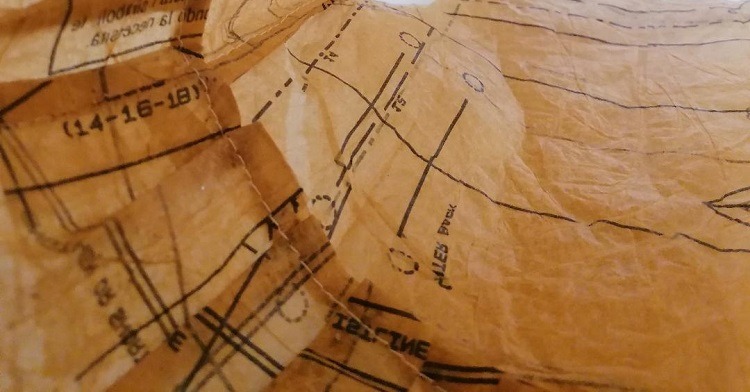
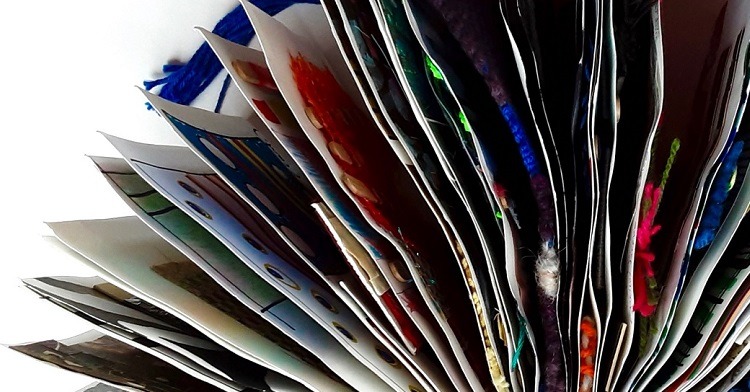
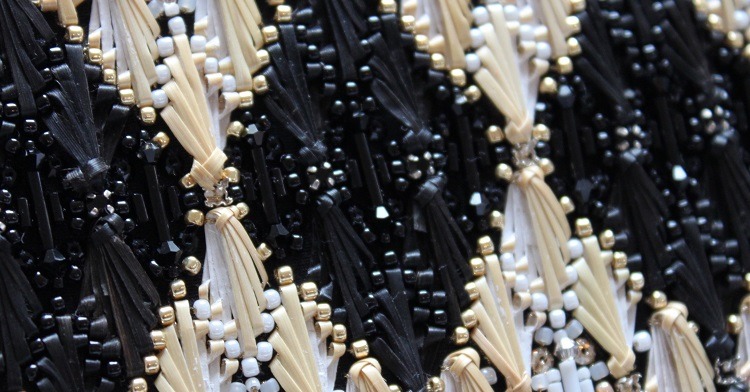
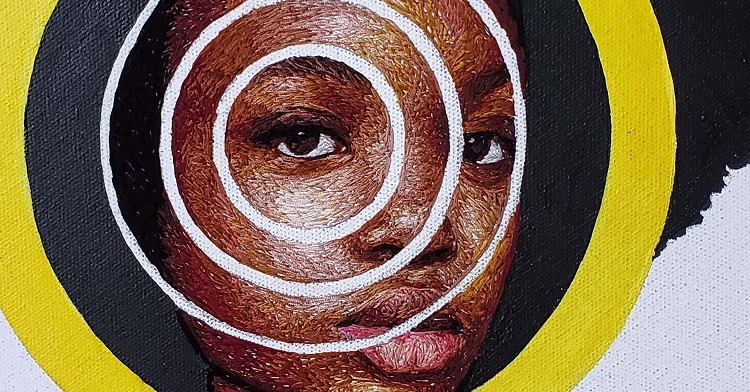
4 comments
Sue Padfield
I love her work and how she uses so many colours for the hair. So realistic. Her subjects are everyday people but I vote the viewer into the moment of time. Amazing g talent
lidas
que buenos detalles ,color puntada ,maravilloso
Debra D
This is BEAUTIFUL work!
Kathy
Thank you for the introduction to Sila Gur, what a wonderful artist. I felt really quite moved by the artistry it’s beautiful work. Each peices carries it’s own personality somehow. Uplifting and inspiring.